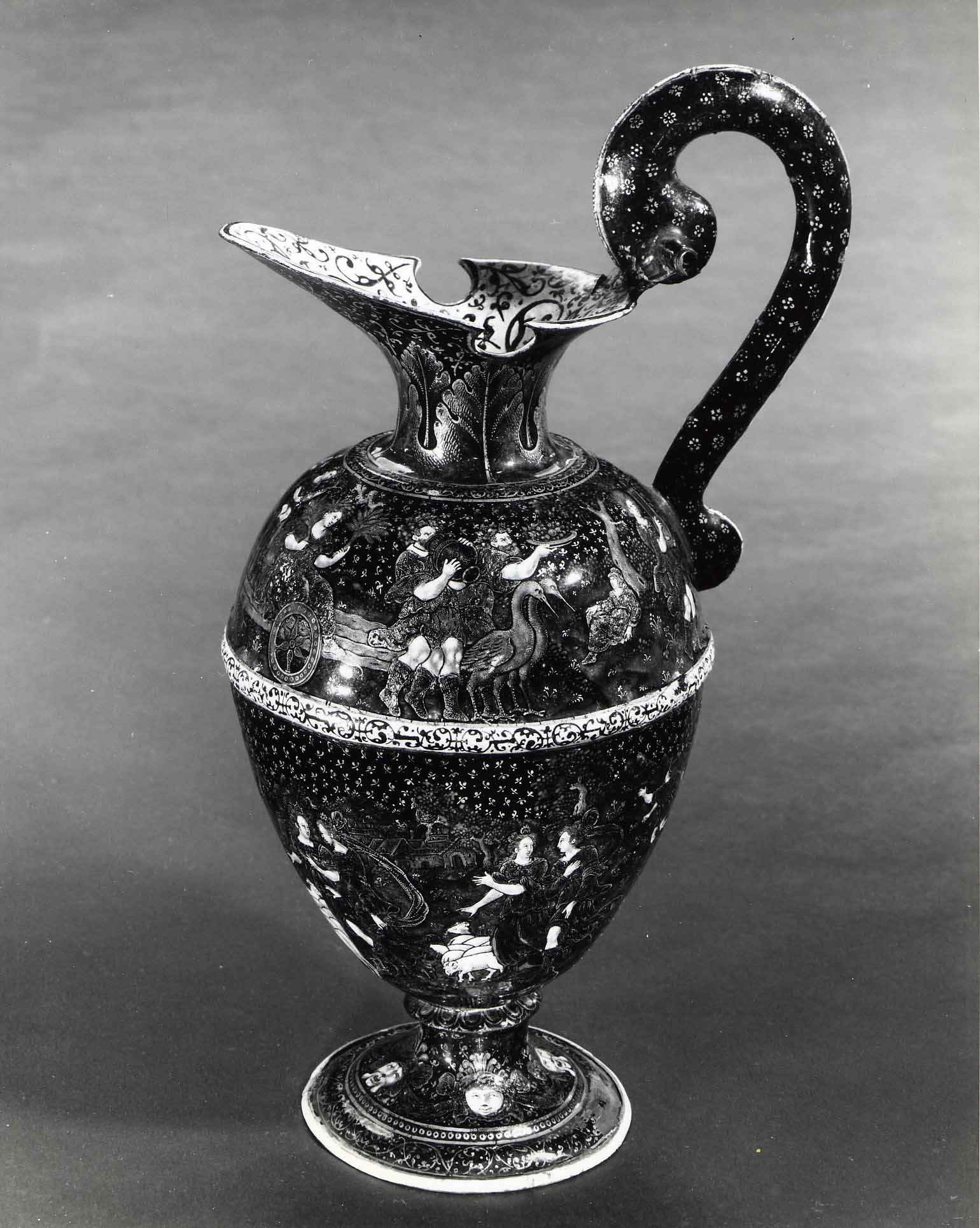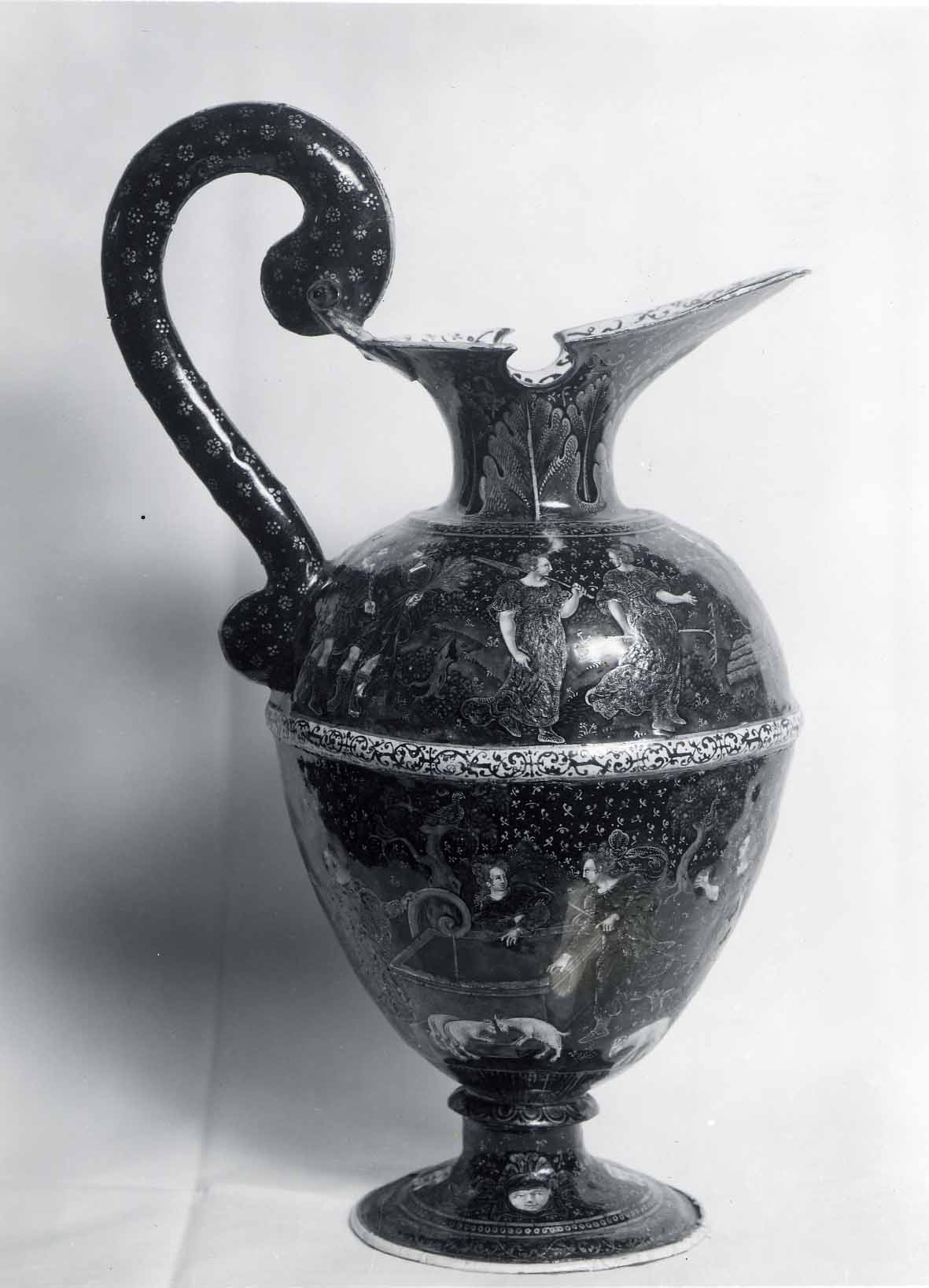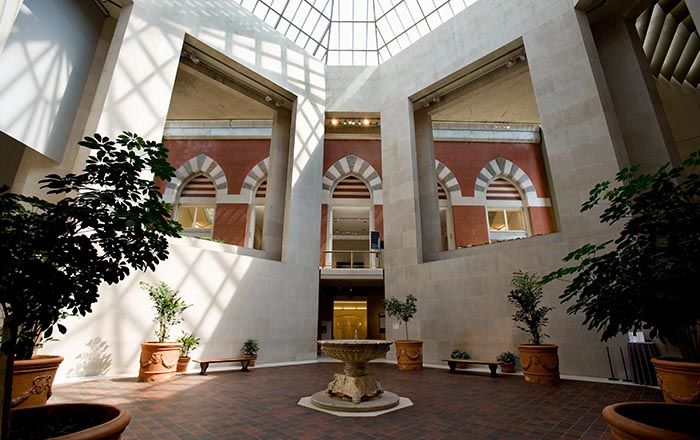Triumph of Ceres
Suzanne de Court French
The only female to earn a reputation in the enamel workshops of Limoges in the late sixteenth and early seventeenth centuries, Suzanne de Court may have been the daughter of Jean de Court (active 1550-1600). If so, she descends from one of the great dynastic families of enamellers in Renaissance France, artisans permitted to practice only by royal edict.
The Lehman ewer, decorated with a brilliant combination of translucent enamel and grisaille, is divided into two narrative zones by a band of black arabesques on a white ground. The top zone illustrates the triumphal procession of Ceres in a landscape of turquoise green foliage; this scene is based on an earlier engraving. The bottom zone, drawn from a woodcut illustration, is taken from the story of Moses and the Daughters of Jethro as told in Exodus: "…Moses fled from Pharaoh, and stayed in the land of Midian; and he sat down by a well. Now the priest of Midian had seven daughters; and they came and drew water, and filled the troughs to water their father's flock. And the shepherds came and drove them away, but Moses stood up and helped them, and watered their flock." Having driven away the shepherds, Moses is shown at the well, standing with the daughters of Jethro surrounded by their flock.
There is a sense of movement in both narratives, the stories unfolding in a continuous frieze. It is possible that the ewer was made as a wedding present, as both scenes allude to marriage. Ceres, associated with fertility, was worshipped as the goddess of marriage. In the story of Jethro, Moses marries Zipporah, one of Jethro's daughters. The ewer itself carries water, a metaphor for purity.
Due to rights restrictions, this image cannot be enlarged, viewed at full screen, or downloaded.
This artwork is meant to be viewed from right to left. Scroll left to view more.






